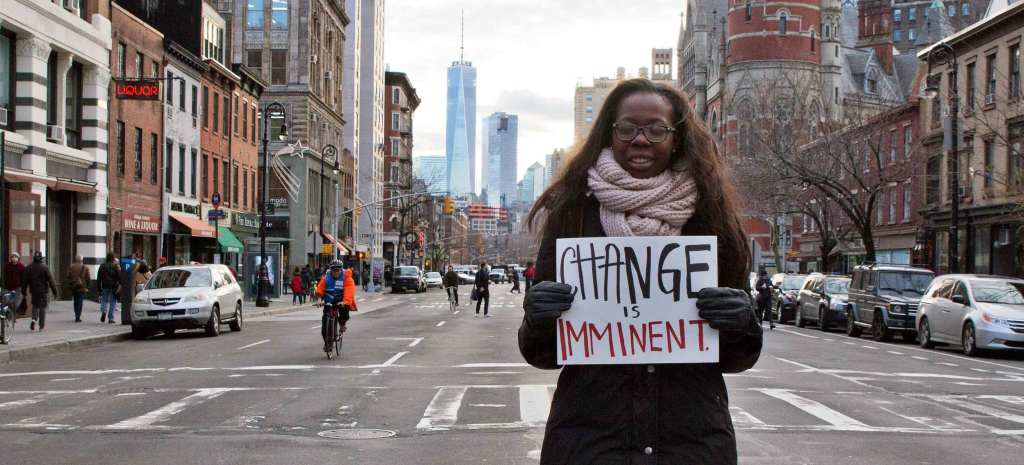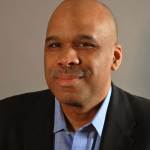
The following is an excerpt from Steve Phillips’s bestselling book Brown Is the New White: How the Demographic Revolution Has Created a New American Majority. On April 6, the Ford Foundation hosted a conversation with the author and other experts about how America’s shifting demographic landscape is shaping this polarized election season.
In his last book, Where Do We Go From Here?, Dr. Martin Luther King, Jr. discussed how to tackle the biggest public policy challenges. Not content with half-measures and incrementalism, King called for the outright abolition of poverty, noting that “we are likely to find that the problems of housing and education, instead of preceding the elimination of poverty, will themselves be affected if poverty is first abolished.” King called for a “guaranteed income. . .pegged to the median income of society..[that would] automatically increase as the total social income grows.” In that light, we can see that the current progressive attention to raising the minimum wage, while necessary and positive, is still much more modest than what we can and should be fighting for.
For a sense of how far the scale of current proposals are from what’s needed, consider that the White House’s “My Brother’s Keeper” initiative, launched by President Obama in 2014, aims to direct $300 million per year (most of it from foundations and private sector sources) to empower boys and young men of color. By contrast, the GI Bill spent $50 billion a year (converted to 2014 dollars) throughout the mid-20th century to help a group of millions of Americans identified as needing of assistance. My Brother’s Keeper’s annual funding commitment is less than 1 percent of what was spent on the GI Bill in 2014 dollars.
True justice will require solutions matching the scale of the problem. To that end, I would like to propose that the United States create a Justice and Equality Fund. This fund, modeled on the GI Bill, would invest $500 billion a year (indexed to increase with inflation) in wealth-building opportunities such as home purchase, higher education, job training, and construction and entrepreneurship.
The initiative would be funded by taxing the assets—not just the income—of the wealthiest one percent of Americans. The current tax code taxes only annual income, not the underlying wealth people hold, and it’s that wealth that generates the income for most rich people (in the form of interest, dividends, and capital appreciation of investments). The top one percent in America hold more wealth than the bottom 90 percent combined—approximately $26 trillion. If we were to institute an annual wealth tax of just two percent on the assets of the country’s wealthiest one percent, that could generate $500 billion per year for the nation. With an average return in the stock market of 10 percent per year (annualized since inception), a two percent tax would not decrease anyone’s net worth at all; it would simply slow the rate at which the wealthiest one percent of Americans’ assets grew, from roughly 10 percent to eight percent each year.
With this Justice and Equality Fund, we could finally address the wealth inequality crisis. For example, we could use this tax revenue to make zero-interest down payment loans available to anyone who wants to buy a house and guarantee the underlying mortgage. This would enable people who didn’t come from families that could leave them an inheritance via real estate or other assets to jump on the wealth creation train. The Justice and Equality Fund could also replicate the role of the GI Bill in expanding access to higher education for millions of people. President Obama already offered a bold and inspiring plan in January 2015 to make community college in America tuition-free. But why can’t we also provide truly affordable university education and zero-percent interest student loans? Why can’t we expand the student loan forgiveness programs to include loans held by teachers, those in STEM careers, public interest lawyers, military volunteers, and a much broader range of health care professionals?
The benefits from The Justice and Equality Fund would also provide a dramatic boost to the overall economy. For example, we’d need to build more schools, colleges, and hire more teachers to provide all students with equal high-quality public education. In addition, entrepreneurship would flourish, with start-ups reflecting and serving the full diversity of our nation’s population. The 2009 economic stimulus package injected nearly $800 billion into the economy, and studies have shown that that investment resulted in the creation of nearly 3 million jobs and a reduction in unemployment by 1.5 percent.
Today’s racial wealth gap is a modern-day manifestation of the fact that America was built on land stolen from Native Americans and Mexicans, and developed by the backbreaking labor of African Americans, Latinos, and Asian Americans. Given this reality, we all have to ask ourselves: What is the right and just thing to do, from a public policy standpoint, to close this gap in a country that professes a belief in justice and equality? If progressives want to vastly improve the conditions in underserved and underdeveloped communities, capture the imagination of the New American Majority, and secure its lasting loyalty, then bigger and bolder progressive policy solutions are required. Much bigger and much bolder.
In recent years, there has been increasing attention paid to the broad issue of economic inequality, but frequently the analysis doesn’t go deep enough. It is critical to understand that there are three core dimensions of economic inequality. On one level, there is income inequality, or how much money people make. Income inequality has received the most attention in the form of campaigns to raise the minimum wage and highlight the pay disparity between CEOs and their employees. On a deeper, more radical level is wealth inequality, or how much money people have.
Although there has been some rhetorical attention to income inequality in the early stages of the 2016 presidential race, less advocacy and organizing attention has been paid to disparities in net worth or assets, but the Occupy Wall Street movement’s slogan, “We Are the 99 Percent,” began to highlight the reality of broad wealth inequality.
And on an even deeper, truly revolutionary level, is racial wealth inequality—the profound difference in net assets owned by people of different racial groups. Tackling the racial wealth gap in this country would be revolutionary because it requires all of us to grapple with the question of how and why the enormous gap came to be, accepting and acknowledging the painful answers, and committing to investing time and resources to do all that we can to bring about justice and fairness.
Steve Phillips is a national political leader, civil rights lawyer, senior fellow at the Center for American Progress, and author of NY Times bestseller Brown is the New White: How the Demographic Revolution Has Created a New American Majority. In 1992 he became the youngest person ever elected to public office in San Francisco and went on to serve as president of the Board of Education. He is founder of PowerPAC+, a social justice organization dedicated to building a multiracial political coalition.
Copyright © 2016 by Steve Phillips. This excerpt originally appeared in Brown Is the New White: How the Demographic Revolution Has Created a New American Majority, published by The New Press. Reprinted here with permission.
